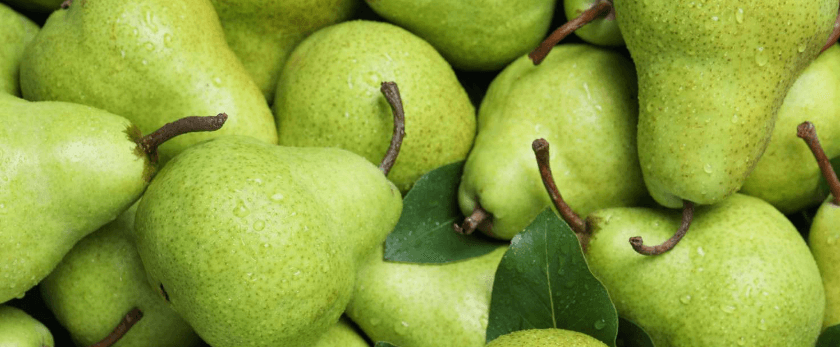Pears are a delicious and nutritious fruit that can be grown in your own backyard. Not only are they a tasty addition to any meal, but they also have numerous health benefits, including being a good source of fiber, vitamin C, and antioxidants. Growing pears is also a great way to reduce your carbon footprint and contribute to a more sustainable future. In this article, we will discuss how to grow pears in an eco-friendly manner, from caring for your trees to common problems and solutions.
How to Care for Pear Trees
Watering
Pears require consistent watering, especially during the first few years of growth. The key is to keep the soil moist but not waterlogged. A good rule of thumb is to water deeply once a week, providing about 1 inch of water. However, this may vary depending on your climate and soil type. It's important to check the soil moisture regularly and adjust your watering schedule accordingly.
Light
Pears thrive in full sun, so it's important to choose a location for your tree that receives at least 6-8 hours of direct sunlight per day. If you live in a hot climate, some afternoon shade may be beneficial to prevent sunscald on the fruit.
Soil
Pears prefer well-drained, loamy soil with a pH between 6.0-7.0. If your soil is too acidic, you can add lime to raise the pH. If it's too alkaline, you can add sulfur to lower the pH. It's also important to ensure that the soil is rich in organic matter, as this will provide essential nutrients for your tree.
Fertilizer
Pears require regular fertilization to promote healthy growth and fruit production. It's best to use a balanced fertilizer with equal amounts of nitrogen, phosphorus, and potassium. You can also use organic fertilizers, such as compost or manure, to provide nutrients to your tree. It's important to follow the instructions on the fertilizer package and not over-fertilize, as this can lead to excessive vegetative growth and reduce fruit production.

Pruning
Pruning is an essential part of caring for pear trees. It helps to maintain the shape of the tree, promote air circulation, and remove dead or diseased branches. It's best to prune your tree in late winter or early spring before new growth begins. You can also prune in the summer to remove any water sprouts or suckers that may have grown.
Best Time to Grow Pears
The best time to grow pears is in the fall or early spring when the tree is dormant. This allows the tree to establish its root system before the growing season begins. You can also plant container-grown trees in the summer, but they may require more frequent watering and care.
Common Problems with Pears and Solutions
Fire Blight
Fire blight is a bacterial disease that affects pear trees, causing the leaves and branches to turn black and die. It's most common during warm, wet weather and can spread quickly. To prevent fire blight, it's important to plant disease-resistant varieties and avoid over-fertilizing. If your tree does get infected, prune off the affected branches and dispose of them properly to prevent the spread of the disease.
Pear Psylla
Pear psylla is a small, sap-sucking insect that can cause damage to pear trees. They can be identified by their pear-shaped bodies and white, waxy coating. To control pear psylla, you can use insecticidal soap or neem oil. It's also helpful to attract natural predators, such as ladybugs and lacewings, to your garden.
Codling Moth
Codling moth is a common pest that affects pears and other fruit trees. The larvae of this moth feed on the fruit, causing it to become discolored and deformed. To prevent codling moth, you can use pheromone traps to attract and trap the male moths. You can also use insecticidal sprays or introduce natural predators, such as parasitic wasps, to control the population.
Harvesting and Storage
Pears are ready to harvest when they are firm but slightly soft to the touch. You can also check the color of the fruit, as it should be a light green or yellowish color. To harvest, twist the fruit gently from the tree, being careful not to damage the stem. Pears can be stored in a cool, dark place for up to 2-3 months. You can also store them in the refrigerator for a few weeks.
Responsible Disposal Methods
When it comes to growing pears, it's important to not only focus on the cultivation process but also on responsible disposal methods. Here are some tips for disposing of waste in an eco-friendly manner:
- Compost: Any organic waste from your pear tree, such as fallen leaves or pruned branches, can be composted to create nutrient-rich soil for your garden.
- Mulch: You can also use shredded leaves or wood chips as mulch around your pear tree. This will help to retain moisture, suppress weeds, and provide nutrients to the soil.
- Recycle: If you use any plastic or non-biodegradable materials in your garden, make sure to recycle them properly.
- Donate: If you have an abundance of pears, consider donating them to a local food bank or sharing them with your neighbors.
Conclusion
Growing pears is a rewarding and sustainable way to add fresh, healthy fruit to your diet. By following these tips for caring for your pear tree and using responsible disposal methods, you can contribute to a greener, more eco-friendly lifestyle. So why not give it a try and start growing your own pears today? Your taste buds and the planet will thank you.










